Hope for mountain gorillas, African elephants on Endangered Species Day
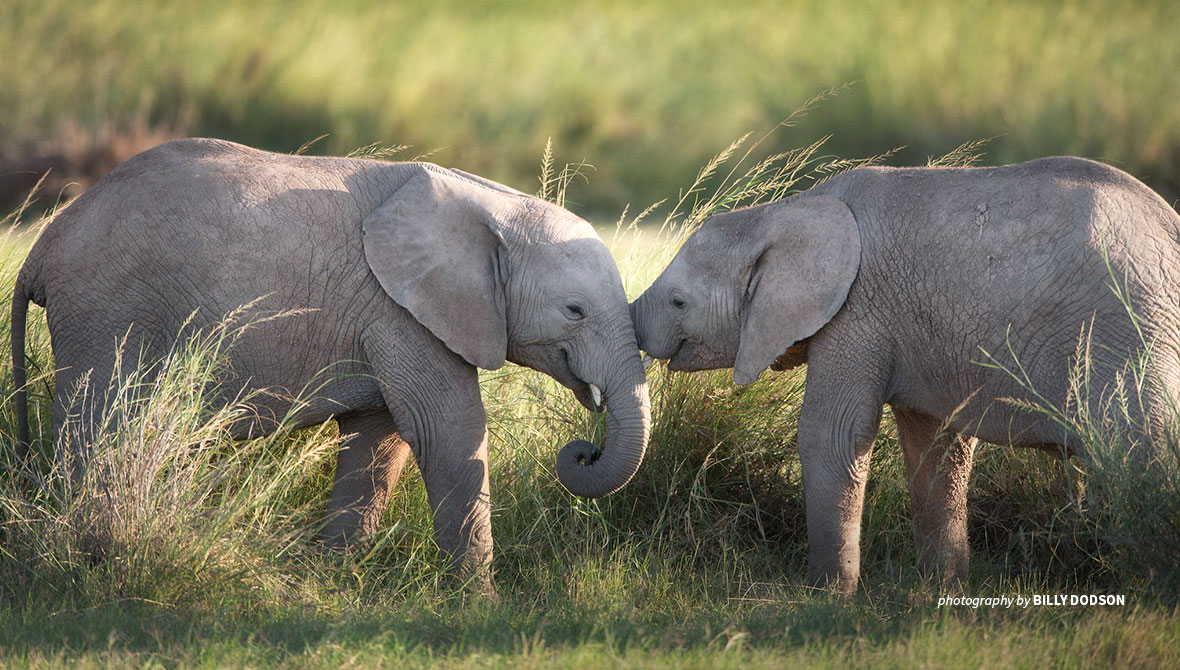
African bush elephants are an endangered wildlife species in Africa, while forest elephants are a critically endangered species
According to the International Union for Conservation of Nature’s Red List of Threatened Species, over 40,000 species are threatened with extinction, making up 28 percent of all assessed animals, plants, and fungi.
On Endangered Species Day, marked every third Friday of May, people worldwide learn about conservation issues and take action to protect endangered wildlife species.
Protecting African wildlife species that are endangered
Endangered wildlife are species at risk of extinction due to poaching, environmental changes, including the climate crisis, overhunting, natural disasters, and loss of habitats. African Wildlife Foundation works across Africa to protect endangered wildlife like the mountain gorilla and the Grevy’s zebra.
We do this in several ways, including training rangers and scouts, who are at the forefront of protecting wildlife and wild lands. For example, we equip rangers with various skills, such as handling sniffer dogs and tracker dogs to detect illegal wildlife trafficking and other wildlife crimes. In addition, we empower local communities to practice conservation-friendly activities that improve livelihoods and sustainability. We also work with local, regional, and national governments to prioritize conservation on their development agendas.
To mark this year's Endangered Species Day, AWF sheds light on four endangered African wildlife species whose numbers are stable or increasing due to successful conservation efforts.
Mountain gorillas downlisted from critically endangered
In 2018, the IUCN declared the great ape species — which has been highly impacted by poaching, forest degradation, and habitat loss due to human encroachment — as endangered, a significant milestone for the mountain gorilla (Gorilla beringei ssp. Beringei), once listed as critically endangered. Political instability in the Democratic Republic of Congo and Rwanda and mountain gorillas’ susceptibility to human diseases like ebola and flu are other challenges that led to the species’ decline. Nevertheless, over 1,000 mountain gorillas are found in the wild today, and thanks to conservation efforts over the years, their population is now increasing.
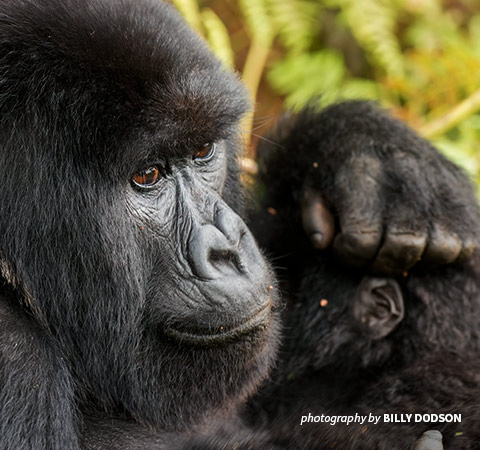
> Mountain gorilla populations are increasing steadily thanks to intensive conservation efforts
AWF’s conservation of mountain gorillas began in the 1960s when we supported Dian Fossey’s mountain gorilla study. Then, together with the World Wildlife Fund and the Fauna Preservation Society, we started the Mountain Gorilla Project, which focused on training and equipping park rangers with the necessary equipment to preserve the species. This consortium also worked to create awareness among communities near mountain gorilla habitats to understand the need to protect the then critically endangered great ape.
We also worked with private operators to design and construct community-owned lodges like the Sabyinyo Silverback Lodge in Rwanda and the Clouds Mountain Gorilla Lodge in Uganda, benefiting both the people and great apes.
In 2018, AWF donated a 27.8-hectare piece of land adjacent to the Volcanoes National Park to the Rwandan government to expand the mountain gorilla habitat for the increasing population. Building on the historic expansion of the protected area, AWF and partners are seeking to add a further 3,740 hectares of habitat for mountain gorillas.
There are fewer Grevy's zebras than black rhinos
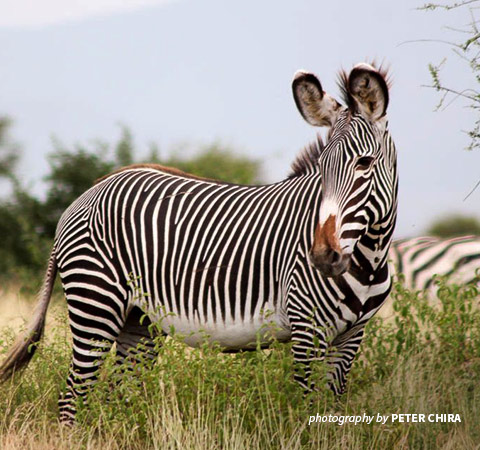
The Grevy's zebra is an endangered zebra species found only in Kenya and Ethiopia
Less than 3,000 Grevy’s zebras (Equus grevyi) remain in the wild today, compared to 15,000 in the late 1970s. The species was once found across Africa but today inhabits only central and northern Kenya and southern and northeastern Ethiopia. The endangered zebra species is now less common than the black rhino.
Challenges that led to the Grevy's zebra’s significant population drop include poaching, habitat degradation leading to resource scarcity, and infrastructure development. However, despite their status on the IUCN Red List as ‘Endangered,’ their population trend is stable thanks to various conservation efforts.
AWF works with people that live near wildlife to build better community goodwill and encourage them to improve their attitudes towards wildlife, and help conserve endangered African wildlife species like Grevy’s zebras. We also train and equip wildlife scouts with GPS monitoring devices to ensure the protection of at-risk wildlife species. We also worked with the Kenya Wildlife Service to fit the Grevy’s zebra in the Buffalo Springs National Reserve with tracking collars to monitor the zebras’ movements, habitat use, and well-being.
African bush elephants and Forest elephants are distinct species
African elephants have for decades been the focus of conservation efforts on the continent. Still, they were categorized separately for the first time by the IUCN in 2021 and their conservation status was confirmed. The African bush elephant (Loxodonta africana) is now endangered while the African forest elephant (Loxodonta cyclotis) is critically endangered.
With approximately 415,000 elephants remaining in the wild, AWF continues its efforts to conserve the species by empowering communities living near wildlife to deal with human-elephant conflict, thereby avoiding retaliatory killings when elephants destroy their farms. For instance, in the Zambezi Valley, we have trained farmers on preventing elephants from encroaching on their farms by growing chili crops, which also act as a source of income. The low-grade chili is sold to scouts who make chili strings (strings dipped in chili) and chili blocks that deter elephants from coming into villages.
In addition, we equip and train anti-poaching squads of community wildlife scouts and rangers, who also monitor elephant movements, thereby preventing them from destroying crops. As a result, at least 10 of the elephant populations we work with are now increasing or stable.
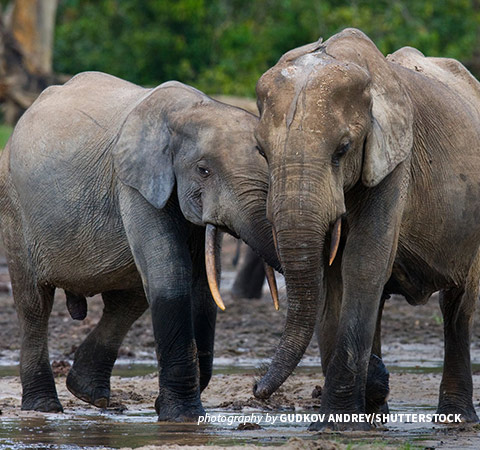
We also work with communities to set aside land for wildlife use. For example, in Zambia, working with the Sekute Chiefdom, we rebuilt the Lupani Primary School, and the community, in return, gave land to create the Sekute Conservation Area. Such initiatives help enhance the communities' participation in conservation efforts.
We also work with governments in Africa to support their efforts to preserve elephants. For instance, in October 2021, we donated US $500,000 to the Kenya Wildlife Service for Kenya’s first-ever baby elephant naming festival, which brought together individuals, corporations, NGOs, and other stakeholders to raise money for elephant conservation in the country. We adopted a newborn female calf, which we named Namayiana, meaning “blessings ahead” in the Masai language, to pay homage to our 10-year strategy. We are also supporting Kenya in implementing its National Elephant Action Plan 2021-2031.
At the international level, we are fighting to stop the demand for ivory in China and across the globe by educating consumers on the impact of ivory products on Africa’s wildlife and working with the Chinese government to close ivory markets.
Fighting illegal wildlife trade can save Africa’s black rhinos and white rhinos
This species that once roamed in Africa, Asia, and Europe has gone through a rapid decline. The current approximation of 27,000 individuals is a drop from around 70,000 in the 1970s. There are two species of the African rhinoceros — the black rhino (Diceros bicornis) and the white rhino (Ceratotherium simum) distinguished not by their color but by their physical differences.
Their conservation status also sets them apart. The black rhino, also known as the hook-lipped rhino, is categorized by the IUCN as critically endangered and has declined by 97.6 percent since the 1960s. Four subspecies represent it: the western black rhino, eastern black Rhino, south-western black rhino, and southern black rhino. On the other hand, the white rhino (named for its wide mouth) is categorized as near threatened. Of the two subspecies remaining, northern white rhinos are functionally extinct in the wild, while southern white rhinos are the greatest in number.
Persistent poaching for rhino horns remains the major challenge for the species’ survival; however, other issues like habitat loss due to human population growth and infrastructure development also threaten their existence. AWF works to safeguard rhinos by supporting wildlife scouts and rangers to protect rhinos from poachers by monitoring the species and identifying any suspicious activity in protected areas and sanctuaries quickly.
In August 2020, we financially supported Ol Pejeta Conservancy to harvest eggs from the last two female northern white rhinos. The exercise by the Kenya Wildlife Service and scientists from Germany and the Czech Republic aims to save the northern white rhino subspecies.
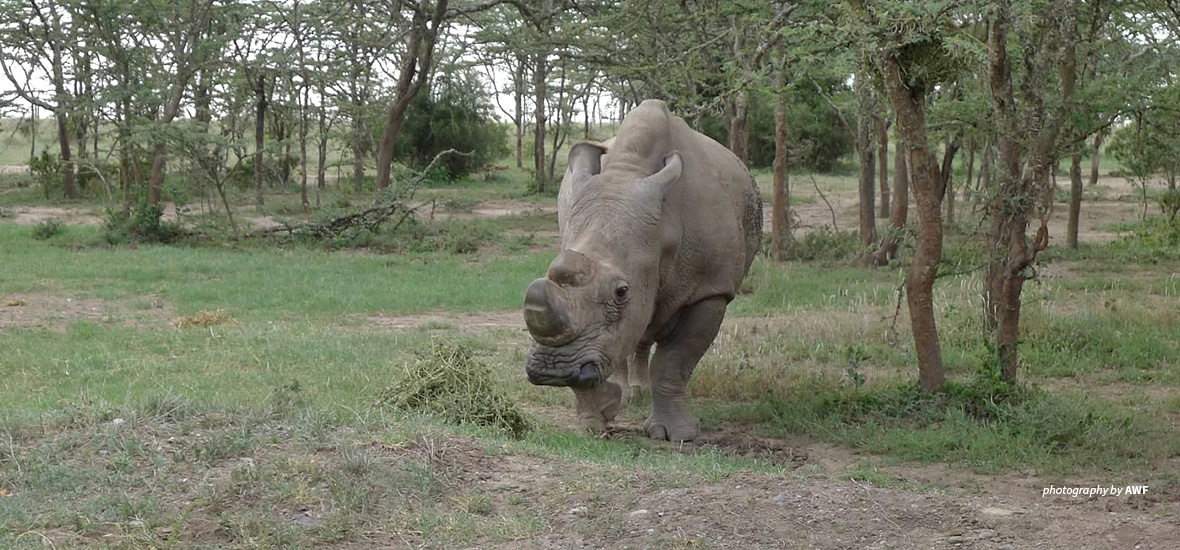
We also work to create safe spaces for rhinos to roam. For instance, we have supported the Ngulia Rhino Sanctuary at the Tsavo East National Park in Kenya since its inception in 1986, at the height of Africa's poaching crisis. In 2020, we upgraded the electric fence at the sanctuary to bolster protection against poachers.
Additionally, we work with governments and other conservation organizations to create international awareness about the illegal trade of rhino horn, rhino poaching, and what it does to rhino populations. For instance, in Vietnam, we conducted the ‘Stop the Demand’ campaign, and in China, we organized the ‘Saving Africa’s Endangered Species’ exhibition to raise awareness about rhinos and the impact of the horn trade. In 2020, one of AWF’s council members, Toby Wosskow, produced and directed “Sides of a Horn,” a film dramatizing the complexities of rhino poaching, the fight against it, and the impacts on communities — telling the story of South Africa’s poaching war from both sides of the fence.
AWF, through our Counter Wildlife Trafficking program, AWF is continuously working to fight illegal wildlife trade in Africa to ensure the protection and security of all wildlife, including endangered species. In addition to training deploying wildlife detection dogs, we analyze wildlife laws in target countries like Kenya, Uganda, Tanzania, Botswana, Cameroon, and Ethiopia to advocate for stricter laws for wildlife criminals. We also familiarize wildlife law enforcers on the existing wildlife laws and train prosecutors on how they can push for deterrent sentences or penalties. At the same time, we support wildlife authorities to strengthen every stage of the process from with evidence management to witness preparation for wildlife crime cases.
> Learn more facts about the rhinoceros species found in Africa